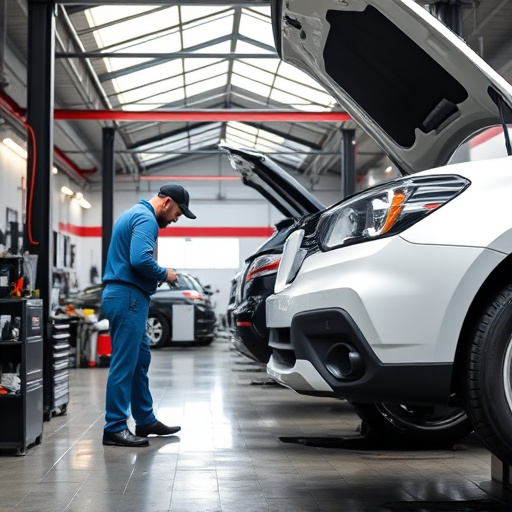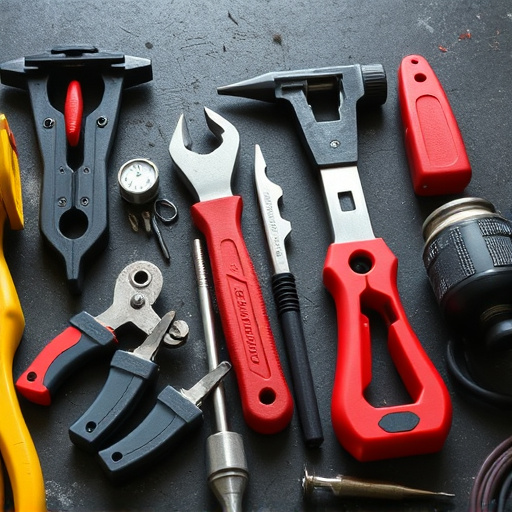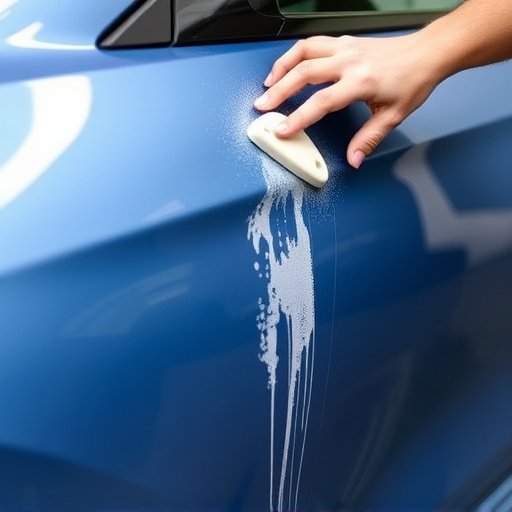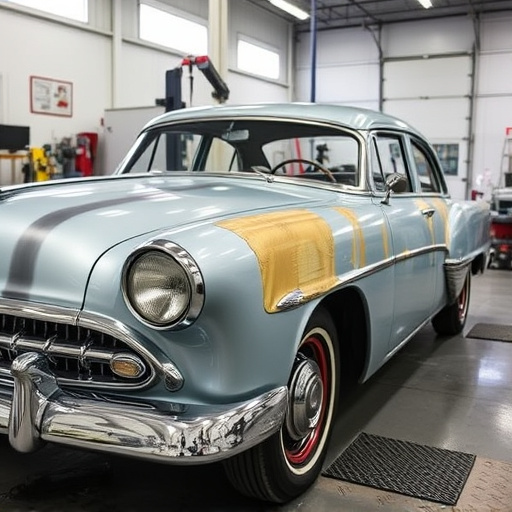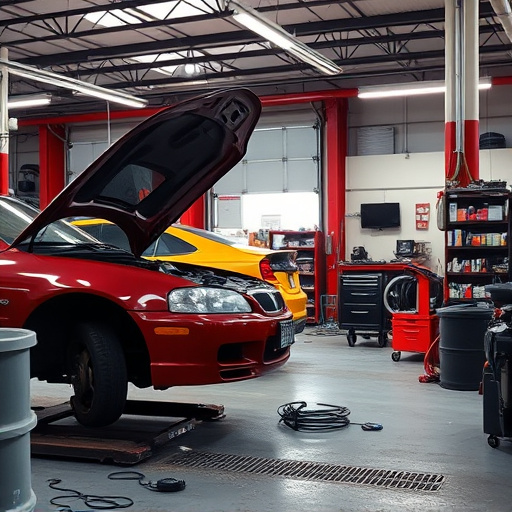Tesla drive unit inspection is a critical post-repair process ensuring optimal vehicle performance and safety. It involves assessing physical integrity, electrical connections, and functional tests to verify power output, motor torque, and battery integration. Common issues like sensor malfunction and software glitches must be addressed by specialized EV repair shops for reliable driving experience.
After a vehicle repair, ensuring the Tesla Drive Unit (TDU) functions optimally is crucial. This comprehensive guide details the steps for performing a thorough TDU inspection, focusing on post-repair verification. Understanding the key components and functionality of these units is essential for accurate troubleshooting. By following our step-by-step process, you’ll gain confidence in identifying common issues and implementing effective solutions for a reliable driving experience.
- Understanding Tesla Drive Units: Key Components and Functionality
- Post-Repair Verification Process: Step-by-Step Inspection Guide
- Common Issues and Troubleshooting Tips for Drive Unit Checks
Understanding Tesla Drive Units: Key Components and Functionality
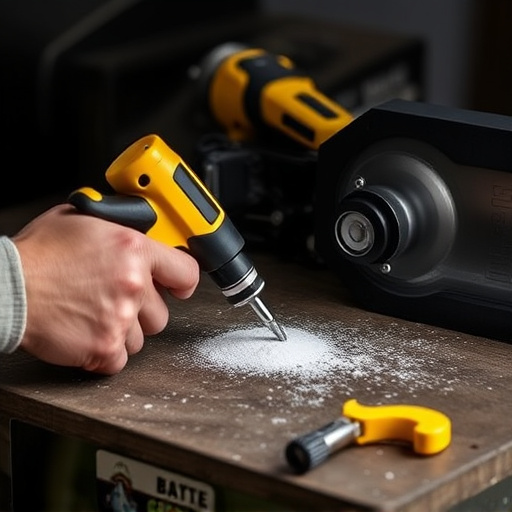
Tesla Drive Units are the brain and muscles of Tesla vehicles, orchestrating a complex symphony of electrical components to enable seamless driving dynamics. These units house critical functionalities like motor control, power distribution, and sensor integration, ensuring the car’s acceleration, steering, and stability. Key components include advanced processors, powerful inverters managing electric motors, sophisticated sensors for navigation and safety, and communication modules enabling over-the-air updates.
Proper functioning of each component is paramount for optimal vehicle performance and safety. A thorough Tesla drive unit inspection post-repair goes beyond visual checks, involving diagnostic scans to verify system codes, performance metrics, and integration with the vehicle’s overall network. This meticulous process guarantees that repairs not only fix visible damage but also restore the drive unit’s crucial functions, ensuring a safe and enjoyable driving experience – whether for a Tesla Model S, Model 3, or even Mercedes-Benz models utilizing similar systems. Think of it as fine-tuning a high-performance machine to deliver both reliability and thrilling performance.
Post-Repair Verification Process: Step-by-Step Inspection Guide
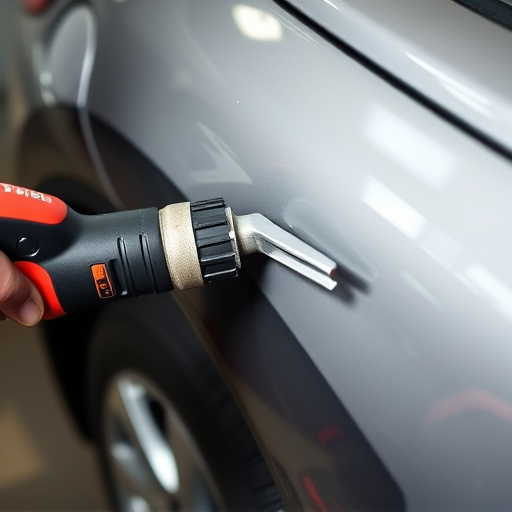
Post-Repair Verification is a meticulous process that ensures Tesla vehicles return to their optimal state after any maintenance or collision repair. The step-by-step guide for a Tesla drive unit inspection involves examining several critical components. First, check the drive unit’s physical integrity, inspecting for any signs of damage from the car collision repair process. Ensure all parts are securely fastened and in proper alignment. Next, verify the electrical connections by checking for corrosion or loose wires, which could impact performance.
The heart of the inspection lies in testing the drive unit’s functionality. This includes verifying power output, motor torque, and battery integration. Use specialized tools to check voltage levels, current draw, and ensure smooth communication between the drive unit and the vehicle’s computer system. Remember, the goal is to confirm that every component, from intricate wiring to robust hardware, functions seamlessly after automotive body work or paintless dent repair, ensuring a safe and reliable driving experience.
Common Issues and Troubleshooting Tips for Drive Unit Checks
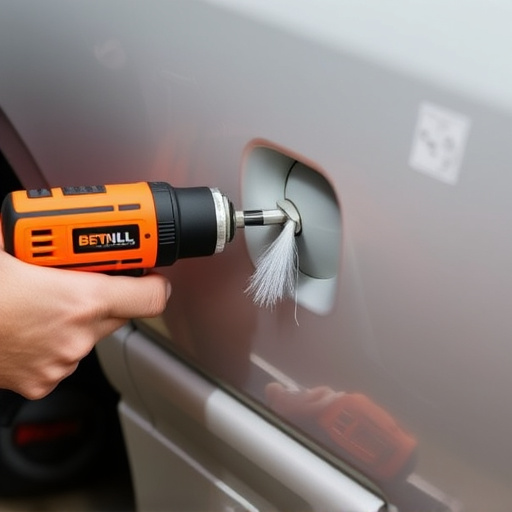
During a Tesla drive unit inspection, several common issues may arise that require attention. One of the most frequent problems is sensor malfunction, which can lead to incorrect speed readings or even system failure. This often manifest as erratic acceleration or sudden braking, requiring advanced diagnostic tools to pinpoint the faulty sensor. Another prevalent issue is software glitches, causing the drive unit to operate sub-optimally or display error codes. These glitches could be due to outdated firmware or hardware conflicts, easily addressable through over-the-air updates or more intensive collision repair services.
Troubleshooting these issues requires a systematic approach. Check for any physical damage, especially after accidents involving automotive body work and tire services, as these can impact sensor integrity. Ensure all connections are secure and clean, as loose or contaminated wires are frequent culprits. For software-related problems, keep the Tesla system updated with the latest patches. If issues persist, specialized repair shops equipped to handle electric vehicle (EV) repairs can diagnose and resolve more complex problems, ensuring your Tesla drive unit operates at peak performance after any post-repair verification.
Performing a thorough Tesla drive unit inspection after repair is paramount to ensure optimal performance and safety. By following a structured verification process, as outlined in this guide, you can identify potential issues early on. Familiarizing yourself with the key components and common problems associated with Tesla drive units empowers you to conduct comprehensive checks. Remember, a meticulous post-repair inspection is a critical step in maintaining the advanced technology that defines Tesla vehicles.

